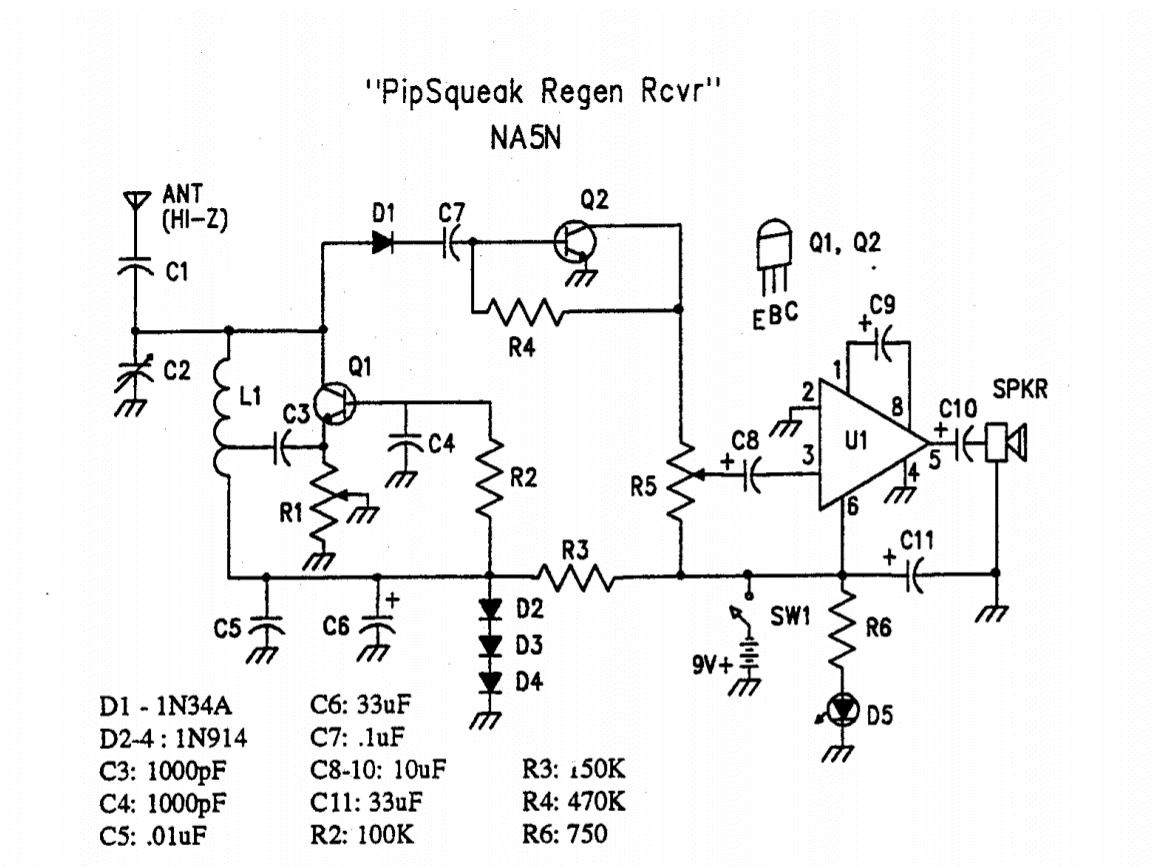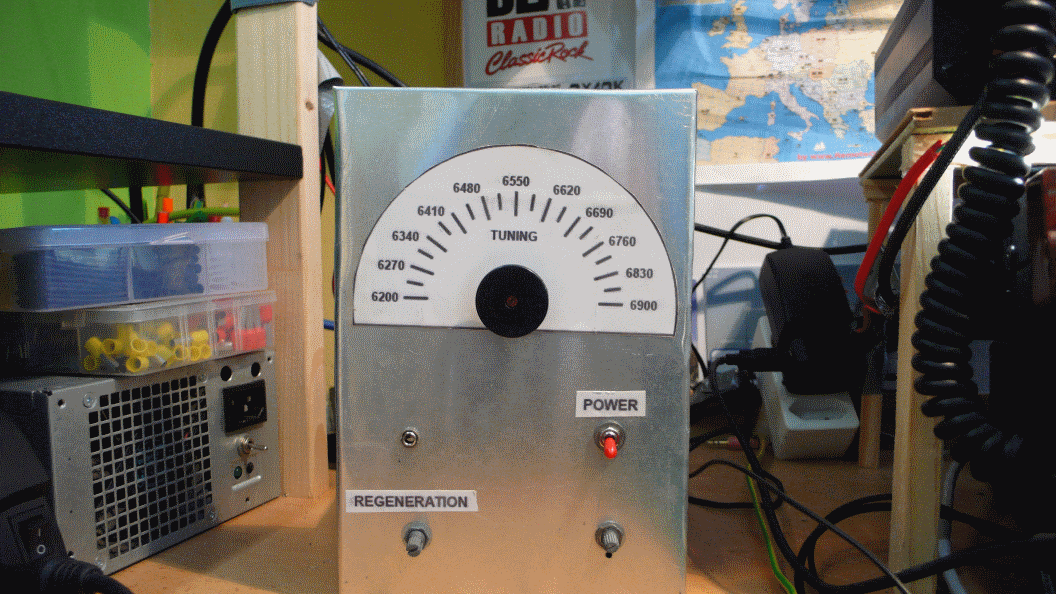

Shortwave listening has been a huge part of the amateur radio hobby and it is what sparked this hobby for me, really. I wanted to take it to the next level by building a homebrew regenerative receiver. I started searching through the internet, looked at numerous schematics, but one really cought my eye. It was an article in the 1996 QRPp, volume IV - the Paul Harden, NA5N "PipSqueak" Regenerative receiver.
The circuit in question was based on the Charles Kitchin receiver, with a few modifications, such as using a bipolar transistor instead of FET in the regenerative part and using an LM386 audio amplifier IC for higher AF gain, so that it is able to drive 64 - 8 ohm headphones with no problem. I also modified the circuit a bit to what i had on hand, so instead of 2N2222, I used BC548 and 1N34 was substituted by 1N5711 schottky diode. Some other component values were changed too, but just slightly.

How does it work?
The combination of coil and variable capacitor from an old AM radio at the antenna input acts as a tuned circuit and the output is fed into the Q1 regenerative amplifier. The amp relies on positive feedback from its output, which in turn amplifies the rf even more. The regeneration is varied by R1 variable resistor, connected to Q1's emiter. It's important, that R1 is set so, that it just starts oscillating. Output is than available on the collector of Q1 and is fed into Q2 through 1N34 or 1N5711 diode (both can be used in this circuit). Q2 acts as a simple audio amplifier stage and provides enough gain to drive a crystal earpiece or, in this case, an LM386 audio amplifier, which in turn drives your headphones or a small 1W speaker. The three 1N914 diodes provide a stable voltage for the regen stage.

Operation
When used with an old AM radio variable capacitor, the tuning range is roughly 6.2 - 6.9 kHz, but that depends on many factors, such as antenna lenght and placement, which might slightly affect the input tuned circuit, which might result into a completly different tuning range. However, after you turn it on, you will be surprised, that no matter what, you will be almost certainly able to copy at least some stations. When you tune into a signal, try changing the R1, until it is just on the edge of not oscillating. At that point, the Q1 functions as a Hi-Q amplifier and you get the most gain.
All in all, it is a pleasure to operate and you'll be surprised by the clarity in the audio, when built correctly. It's a great addition to any shack!
Ladislav Mrkva, OK1LAD (22.8.2019)
References:
